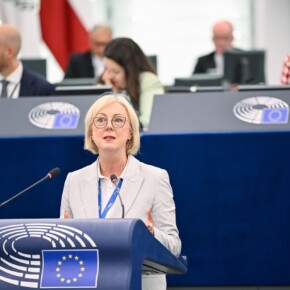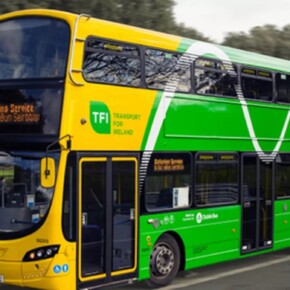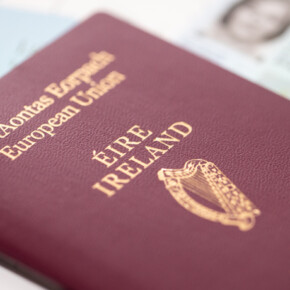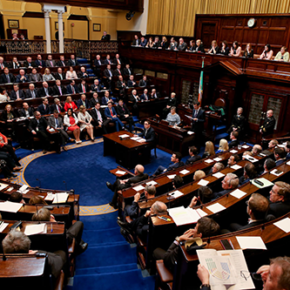Group accuses State of airport law breaches
Padraig Conlon 07 May 2025
A group of aviation professionals has launched a sweeping public letter campaign accusing multiple State agencies of failing to uphold planning and environmental law at Dublin Airport.
The North Runway Technical Group (NRTG), made up of pilots, engineers and other aviation experts, has publicly challenged the government, regulators, and local authorities over what it claims is a two-year-long failure to act on serious breaches in how the airport’s North Runway is operated.
The group says that since the runway opened in August 2022, aircraft have been flying along unauthorised paths that deviate significantly from the route approved in the original 2007 planning permission.
They claim this change has subjected thousands of people, many of whom were not previously affected by airport noise, to intense disruption, while also exposing the State to serious legal, environmental, and financial risks.
In a campaign that signals a significant escalation in pressure, the NRTG has sent 14 formal letters to key figures and institutions, including the Minister for Transport, the Minister for Local Government and Planning, Fingal County Council, the Irish Aviation Authority, the Aircraft Noise Competent Authority (ANCA), the Corporate Enforcement Authority, and several airlines.
All 14 letters are now publicly available on the group’s website, a move the group hopes will increase transparency and accountability.
“This campaign is not about raising new concerns,” said Gareth O’Brien of the NRTG, speaking to Northside People.
“The facts have been known for over two years. What is missing is action.
“Every day the State refuses to intervene increases the risk of litigation, regulatory breaches, and public harm.”
Formed in response to the opening of the North Runway, the NRTG includes commercial and private pilots, as well as engineers and aviation professionals who rely on Dublin Airport for their livelihoods.
Its members say they initially came together to examine the flight paths being used by the Dublin Airport Authority (daa) and to propose practical solutions that could reduce the impact on nearby communities while protecting the airport’s long-term development.
But after repeated inaction from authorities, they say a public campaign was the only remaining option.
At the heart of the group’s case is the assertion that the flight paths currently being used for departures from the North Runway bear little resemblance to what was approved in the Environmental Impact Statement (EIS) submitted in 2007.
That statement formed a critical part of the planning process, allowing An Bord Pleanála to assess the environmental and social impacts of the runway before granting approval.
In a major development, An Bord Pleanála has now confirmed that the current departure routes are materially different from those assessed and approved in 2007.
This confirmation is a cornerstone of the NRTG’s argument that daa is operating in breach of planning law.
Further supporting their case, the Irish Aviation Authority has verified that the unauthorised early turns made by aircraft—some as low as 400 feet above ground—were not introduced for aviation safety reasons.
This contradicts claims made by daa that the new routing was a necessary safety measure.
The impact of the changed flight paths has been profound.
The group says there has been a staggering 335% increase in the number of people directly overflown by departing aircraft.
These are people whose homes were never meant to be under a flight path and who were not included in the original environmental assessment.
As a result, many residents have been left feeling blindsided and powerless, with no clear avenue for recourse.
Despite mounting evidence, Fingal County Council has failed to confirm whether any enforcement action has been taken.
Government ministers, meanwhile, have remained silent, according to the group.
“There is a legal obligation on the State to uphold its own planning rules,” said O’Brien.
“The silence from officials suggests a serious failure of governance.”
The group is particularly concerned about safety and environmental risks stemming from the altered flight paths.
One of the new departure routes now sends aircraft directly over a bird sanctuary that was created as part of the original planning conditions.
Routing planes over this area introduces a bird-strike hazard that was never assessed and could pose a danger to passengers and crews.
They argue this undermines any suggestion that the routing was introduced for safety reasons.
The risks, the group argues, extend beyond noise and safety.
They say the State is now exposed to legal challenges from residents and environmental organisations.
There is also the looming possibility of EU infringement proceedings if Ireland is found to be in breach of its environmental obligations.
Above all, the group warns that continued inaction could further erode public faith in the country’s planning and regulatory systems.
To support their case, the NRTG has released 14 detailed letters, each outlining the failures of specific State bodies.
The documents set out technical breaches, legal risks, and the urgent steps the group believes are required.
They have made the full set available to the public in an effort to ensure transparency and apply pressure on the relevant authorities.
The letters can be reviewed at:
www.dublin-north-runway.com/runway-info/north-runway-governance-campaign-key-letters











